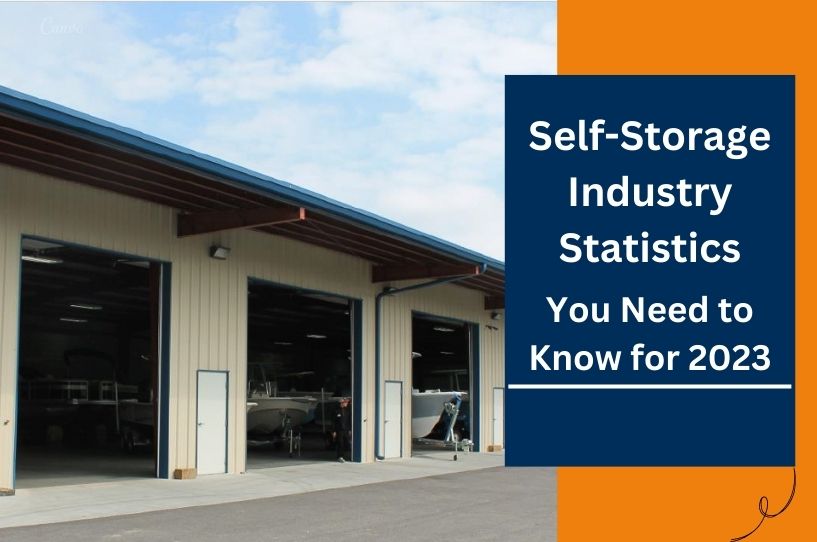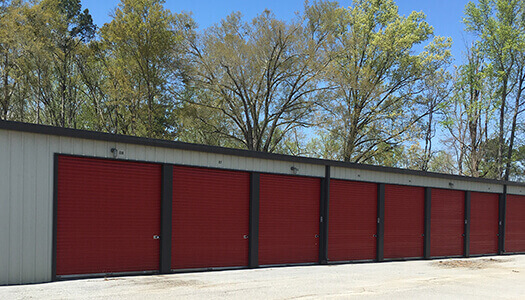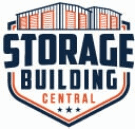The Self-Storage Industry at a Glance
It’s probably not a massive surprise that commercial storage businesses have risen to become one of the most popular commercial enterprises in the US. After all, finding storage space is a major concern for many individuals, especially in urban environments where space is scarce and thanks to advances in modern steel engineering making ownership easy and affordable, the self-storage industry has exploded, bringing in nearly $39.5 billion in 2022 alone.
So, if you’re weighing the prospects of forming your own self-storage business in 2024, you’ll want to keep reading! Below, we’ll walk through vital statistics that can give you a better understanding of how investing in mini-storage buildings can be a lucrative venture for the right business owner.
Market Overview of the Self-Storage Industry
While the pandemic slowed most commercial businesses to a halt, self-storage only grew, proving that it can withstand market upheavals and economic downturns in addition to being an excellent means of passive income. And to get an idea of the current state of the self-storage industry, let’s look at a few details surrounding the market:
- In 2022, the self-storage industry brought in nearly $40 billion.
- The US is home to over 50,000 commercial self-storage facilities.
- Over one-fifth of US citizens use self-storage facilities.
- The average occupancy rate of self-storage buildings is around 96%.
- On average, storage buildings bring in between $100-$150 per unit monthly.
As you can see, the market for self-storage buildings is strong, with no signs of slowing or over saturation ahead. This is a perfect environment for entrepreneurs and investors hoping to secure easy, passive means of income.
Additional Statistics Surrounding Self-Storage Buildings
Whether they’re storage buildings or large multi-unit facilities, there’s a lot to love about the self-storage industry. Let’s look at some other exciting stats about this enormous business:
- Over 1.5 million self-storage buildings are used by military personnel.
- With the pandemic forcing many to downsize, the demand for self-storage only grew during Covid-19.
- Commercial self-storage buildings see increased activity between May and September, when many folks will choose to move into new homes.
- Over three-quarters of all self-storage tenants are homeowners.
- Over 42% of self-storage users pick buildings to help make the moving process easier.
- The top reasons people use self-storage buildings are:
• Lack of space
• Change in household size
• Business purposes
• Downsizing - The most common items stored in self-storage buildings are furniture and clothes.
- Smaller 5×10 and 10×10 storage buildings are the most commonly available sizes.
- The three largest cities for self-storage use are Las Vegas, San Diego, and New York.
- Private businesses are one of the largest users of self-storage facilities.
 Steel Buildings Role with Self-Storage Buildings
Steel Buildings Role with Self-Storage Buildings
As mentioned, steel buildings have made a considerable mark on the self-storage industry. In fact, these structures are so versatile and cost-effective that they’ve become the definitive choice for entrepreneurs hoping for cost-effective infrastructure. Let’s examine a few of these structure types and how they function in the industry:
Mini Storage Buildings
Mini storage buildings are the most common type of steel building used in self-storage facilities. They are typically small, single-story buildings with multiple individual storage buildings. Mini-storage buildings are often used for short-term storage, such as when people move or need to store seasonal items.
These buildings are typically pre-engineered and designed for quick and easy construction. They can be customized to meet the specific needs of the facility owner, and they can be easily expanded or reconfigured as demand grows.
Climate-Controlled Buildings
Climate-controlled storage buildings are designed to maintain a consistent temperature and humidity level within the storage buildings. These buildings are ideal for storing sensitive items such as electronics, artwork, and documents. Climate-controlled facilities are also popular in areas with extreme weather conditions, where temperature and humidity can fluctuate significantly.
Climate-controlled steel buildings are usually more expensive than mini storage buildings due to the additional features and equipment required. However, they offer added value and attract customers who need more secure and controlled storage options.
Self-Storage Buildings
Self-storage buildings are typically larger than mini storage buildings and offer a range of unit sizes to accommodate different storage needs. These buildings can be multi-story, and they often feature amenities such as on-site offices, loading docks, and elevators.
Self-storage buildings are a popular option for long-term storage, such as for people who need to store household items, furniture, or vehicles. They are designed to provide maximum security and convenience and often feature advanced security systems such as video surveillance and keypad entry.
Starting a Self-Storage Business? Let Storage Building Central Pave the Way!
Whether you’re expanding your current operations or starting your first self-storage business, Storage Building Central has the experience and materials to help you design infrastructure that lasts. From single-unit buildings to extensive commercial storage building facilities, we have you covered with a wide selection of metal buildings.
Our structures are highly customizable, giving you unrivaled control over your business’s look, feel, and functionality. Make it your own, and enjoy a building that will provide you with years of dedicated service with minimal maintenance needs.
So, if you’re ready to shake up the self-storage industry, give Storage Building Central a call at +1 (844) 315-3151! Our building specialists are ready to help you design and customize a structure perfectly suited to your unique needs.

 Steel Buildings Role with Self-Storage Buildings
Steel Buildings Role with Self-Storage Buildings
